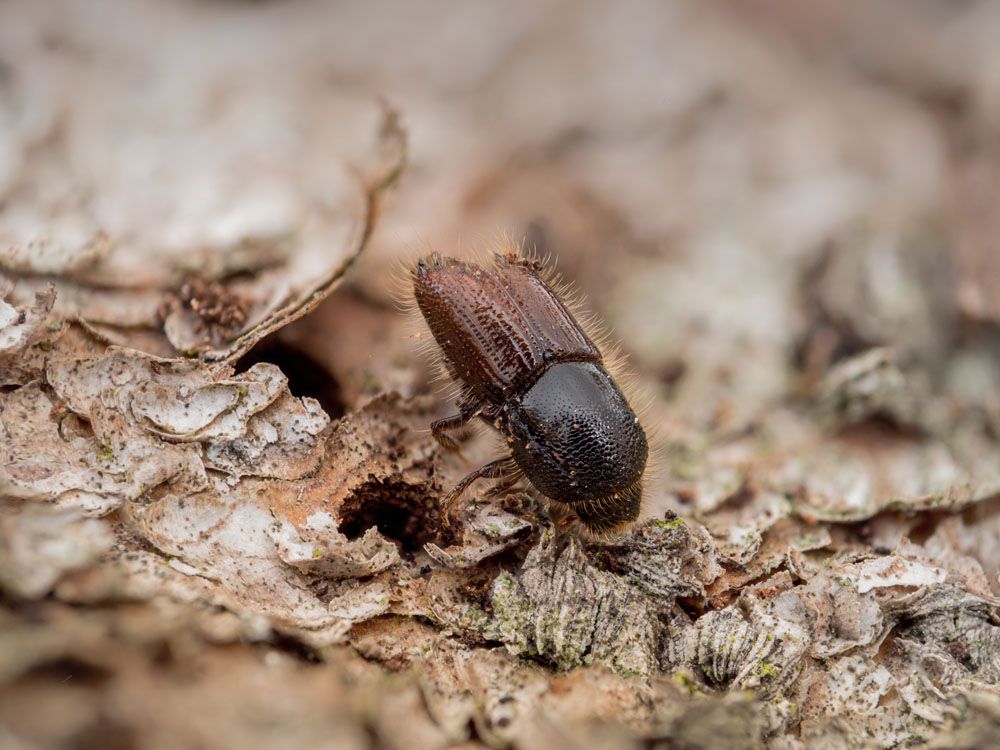
Spruce Beetle – Dendroctonus rufipennis
Spruce Beetle (Dendroctonus rufipennis)
Latin Name: Dendroctonus rufipennis
Common Name: Spruce Beetle
Appearance:
- Adults are cylindrical, hard-bodied insects with black-brown or dark reddish wing coverings. They are small, measuring four to seven millimeters (approximately half a millimeter) in length.
- Adult spruce beetles burrow roughly 12cm long tunnels under the bark and lay approximately 100 eggs per gallery.
- The larvae hatch and feed beneath the bark, generating fan-shaped tunnels.
